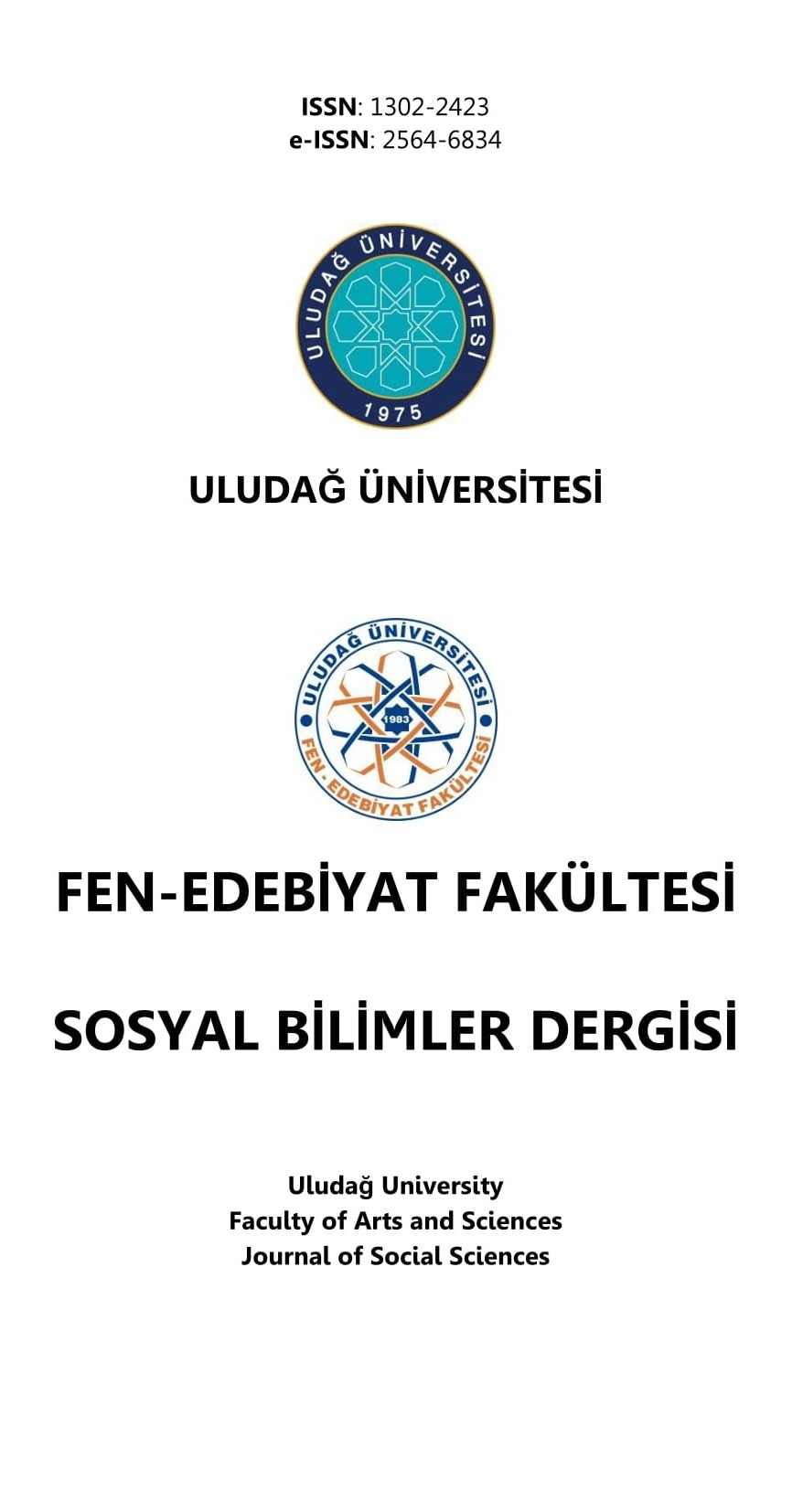GEORGES PEREC’İN “ŞEYLER” ROMANININ GÖSTERGEBİLİMSEL ÇÖZÜMLEMESİ
XX. yüzyıl Fransız edebiyatı yazarları arasında deneysel edebiyat çalışmalarıyla dikkat çeken Georges Perec, kurmaca anlatının üç temel ögesine (kişi, uzam ve zaman) odaklanarak, geleneksel romanın sınırlarını zorlar ve yeni yapılar bulmayı hedefler. Tahsin Yücel tarafından Anlatı Yerlemleri olarak tanımlanan kişi, süre ve uzam kavramları anlatı içinde birbirinden bağımsız değildir ve anlatı çözümlemesinde anlamı oluşturan birer gösterge olarak ele alınır. Çalışmamızda bu yaklaşımla Şeyler romanında, karakterler, uzam, zaman, olay örgüsü, betimleme ve öyküleme tekniklerini incelemeyi amaçladık. Göstergebilim, sözcelem ve anlatıbilim yöntemlerinden faydalanarak, sahip olmak ve var olmak kavramları üzerine sorgulamalar içeren bu yapıtı, 1960’larda gelişen eylem göstergebilimi ve 1980’lerde gelişen varlık göstergebilimine dayanarak çözümledik.
Anahtar Kelimeler:
Georges Perec, Fransız edebiyatı, göstergebilim, anlatıbilim, anlatı yerlemleri
A Semiotic Analysis of Georges Perec’s Novel “Things”
Georges Perec, who attracted attention with his experimental literary style among the writers of the 20th century French Literature, pushes the boundaries of the traditional novel by focusing on the three basic elements of the fictional narrative (person, space, and time) and aims to find new structures. The concepts of person, duration, and space, which are defined as “narrative coordinates” by Tahsin Yücel, are not independent of each other in the narrative and are considered to be indicators that create meaning in narrative analysis. In our study, we aimed to examine the characters, space, time, plot, description, and narration techniques in the novel ‘Things’ with this approach. Using the methods of semiotics, utterances, and narratology, we analyzed this work, which includes inquiries on the concepts of having and being, based on the semiotics of action and the semiotics of being that were developed respectively in the 1960s and 1980s.
Keywords:
Georges Perec, French literature, semiotics, narratology, narrative coordinates,
___
- Altınbüken Karslı, B. (2021). Les Fonctions De la Ville Dans La Littérature: Espace Selon Georges Perec. N. Öztokat Kılıçeri, B. Çağlakpınar (Ed.), Languages and Meaning of the City içinde (347-362. ss.), Istanbul University Press.
- Bankır Meşçioğlu, S. (2021). Pascal Quignard’ın Villa Amalia adlı romanında estetik alımlama ve öznenin kimliksel dönüşümü. Frankofoni, 39(2), 215-225.
- Çağlakpınar, B. (2021). Philippe Claudel’in Köpek Takımadaları romanında alegorik göç anlatısı. Frankofoni, 39(2), 227-238.
- Everaert-Desmedt, N. (2000). Sémiotique du récit. De Boeck Université.
- Eziler Kıran, A. & Kıran, Z. (2007). Yazınsal Okuma Süreçleri. Seçkin Yayıncılık.
- Flaubert, G. (1915). Pensées de Gustave Flaubert. Louis Conard.
- Genette, G. (1972). Figures III. Editions Seuil.
- Genette, G. (2011). Anlatının söylemi. (Çev: F. B. Aydar), Boğaziçi Üniversitesi Yayınları.
- Goldenstein, J. P. (2005). Lire le roman. De Boeck Université.
- Greimas, A. J. (1966). Sémantique structurale. Larousse.
- Greimas, A. J. (1970). Du Sens. Editions Seuil.
- Greimas, A. J. (1983). Du Sens II. Editions Seuil.
- Greimas, A. J. (1987). De l’Imperfection, Editions Pierre Fanlac.
- Greimas, A. J. & Fontanille, J. (1991). Sémiotique des passions. Des états de choses aux états d’âme. Editions Seuil.
- Panier, L. (2017, Kasım). Éléments de grammaire narrative. https://bible-lecture.org/wp-content/uploads/2017/11/panier-grammaire.pdf
- Perec, G. (1965). Les Choses. Editions Julliard.
- Perec, G. (1988). Şeyler. (Çev: S. Tamgüç), Metis Yayınları.
- Perec, G. (2000). Espèces d’espaces. Editions Galilée.
- Perec, G. (2017). Mekân Feşmekân. (Çev: A. Erkay), Everest Yayınları.
- Roumette, J. (2007, Ekim 30). Quand la fin paralyse le début, ou l’impossibilité de commencer chez Perec, des Choses à La Vie mode d’emploi. http://www.fabula.org/colloques/document713.php,%20page%20consult%c3%a9e%20le%2001%20d%c3%a9cembre%202021
- Tanyolaç Öztokat, N. (2005). Yazınsal metin çözümlemesinde kuramsal yaklaşımlar. Multilingual.
- Yücel, T. (2019). Anlatı yerlemleri: Kişi, süre, uzam. Yapı Kredi Yayınları.
- Başlangıç: 1999
- Yayıncı: Bursa Uludağ Üniversitesi
Sayıdaki Diğer Makaleler
BİR OSMANLI BAŞKENTİNDE CELÂLİLER: BURSA’DA CELÂLİ İSTİLASI VE YARATTIĞI TAHRİBAT
GEORGES PEREC’İN “ŞEYLER” ROMANININ GÖSTERGEBİLİMSEL ÇÖZÜMLEMESİ
KENTSEL DÖNÜŞÜM ALANINDA YAYIMLANMIŞ COĞRAFYA LİTERATÜRÜ ÜZERİNE BİR DEĞERLENDİRME
TÜRKÇENİN TARİHÎ METİNLERİNE MODERN BİR BAKIŞ: TONYUKUK YAZITI’NDA “ÖTEKİ” ALGISI
HEMŞİRELERİN BAKIŞ AÇISINDAN ÖLÜM VE ÖTANAZİ İLİŞKİSİ ÜZERİNE FENOMENOLOJİK BİR ANALİZ
LUDWİG VAN BEETHOVEN’İN OPUS 2 NO.1 SONATININ PİYANO ÖĞRETİMİNE YÖNELİK İNCELENMESİ
Mecnun DİNÇER ATAN, Birsen JELEN
VİYOLA ÖĞRETİMİNDE SOL EL VE SAĞ EL TEKNİKLERİNİN İNCELENMESİ
J. P. SARTRE FELSEFESİNDE VARLIĞIN FAZLADANLIĞI VE BULANTI DUYGUSU
